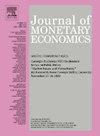劳动力市场的
IF 4.3
2区 经济学
Q1 BUSINESS, FINANCE
引用次数: 0
摘要
我们访问了一个美国工人的长面板数据集,以记录个人在跨就业州过渡模式方面的异质性程度。我们发现,异质性很好地近似于三种潜在类型:αs, βs和γs。α型的员工很快就会失业,一旦找到工作,他们很可能会干上两年以上。γ型员工找工作的速度很慢,一旦找到工作,他们很可能在一年内离职。我们使用我们的实证研究结果来校准一个搜索理论模型,其中工人在控制其就业过渡的参数方面是异质的。我们发现,αs从失业到就业的速度很快,因为他们从贸易中获得了很大的收益,而且他们很可能在一个工作岗位上呆2年以上,因为他们在不同的工作岗位上的生产率是相似的。相比之下,γ - s退出失业的速度很慢,因为他们从贸易中获得的收益很小,而且他们很可能在一年内离职,因为他们在一小部分工作中的生产率要比在大多数工作中的生产率高得多。我们发现,对总生产率的负面冲击会导致失业率的大幅持续增长,而失业率的增长主要是由γ-工人驱动的。该模型的预测与大衰退期间观察到的失业动态非常吻合。本文章由计算机程序翻译,如有差异,请以英文原文为准。
The alpha beta gamma of the labor market
We access a long panel dataset of US workers to document the extent to which individuals are heterogeneous with respect to their pattern of transitions across employment states. We find that heterogeneity is well approximated by three latent types: s, s and s. Workers of type leave unemployment quickly and, once they find a job, they are likely to keep it for more than 2 years. Workers of type find employment slowly and, once they do find a job, they are likely to leave it within 1 year. We use our empirical findings to calibrate a search-theoretic model in which workers are heterogeneous with respect to the parameters governing their employment transitions. We find that s move quickly out of unemployment to employment because they have large gains from trade, and they are likely to stay on a job for more than 2 years because their productivity is similar in different jobs. In contrast, s exit unemployment slowly because their gains from trade are small, and they are likely to leave a job within 1 year because they are much more productive in a small fraction of jobs than in the majority of jobs. We find that a negative shock to aggregate productivity leads to a large and persistent increase in unemployment that is mainly driven by -workers. The predictions of the model align well with the unemployment dynamics observed during the Great Recession.
求助全文
通过发布文献求助,成功后即可免费获取论文全文。
去求助
来源期刊

Journal of Monetary Economics
Multiple-
CiteScore
7.20
自引率
4.90%
发文量
90
审稿时长
74 days
期刊介绍:
The profession has witnessed over the past twenty years a remarkable expansion of research activities bearing on problems in the broader field of monetary economics. The strong interest in monetary analysis has been increasingly matched in recent years by the growing attention to the working and structure of financial institutions. The role of various institutional arrangements, the consequences of specific changes in banking structure and the welfare aspects of structural policies have attracted an increasing interest in the profession. There has also been a growing attention to the operation of credit markets and to various aspects in the behavior of rates of return on assets. The Journal of Monetary Economics provides a specialized forum for the publication of this research.
 求助内容:
求助内容: 应助结果提醒方式:
应助结果提醒方式:


